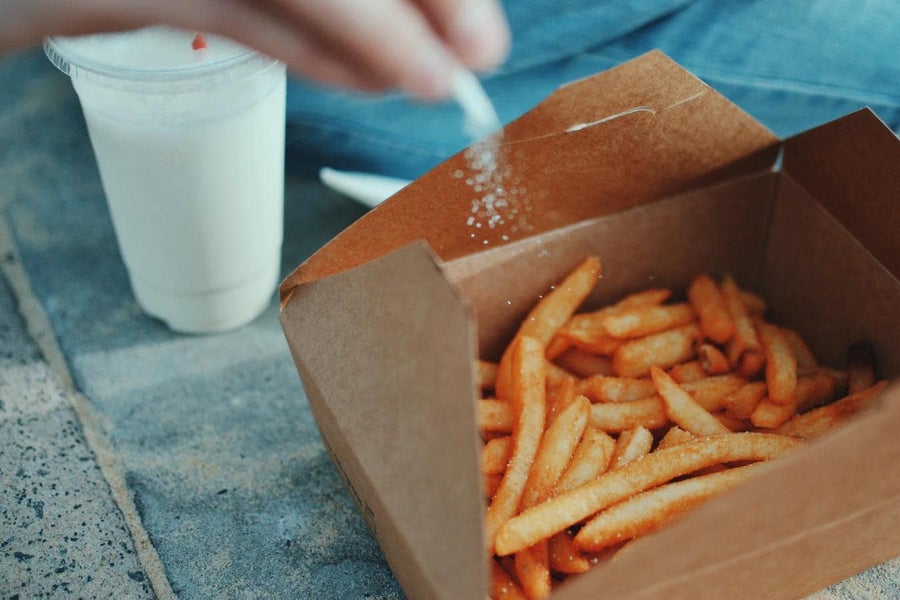Salt and sugar

Salt
Salt (sodium or sodium chloride) is used to flavour foods and as a preservative. Diets high in salt-preserved foods, such as pickled vegetables and salted or pickled fish, have been linked to an increased risk of stomach cancer. High blood pressure can also be caused by having too much salt in the diet.
The body does need some sodium but in most circumstances we get all our sodium requirements from foods naturally. There is no need to add salt to foods. It is a good idea to switch to a low-salt diet and try flavouring foods with herbs and spices instead.
But I don’t add salt to my food!
Most of the salt we eat is hidden in packaged and take-away foods such as pizza, pies, sauces, condiments, seasonings, dressings, soups, margarines, bread and breakfast cereals. A food can still be high in salt and not taste salty.
When shopping, read labels and choose products with less sodium. Look for ‘no added salt’ or ‘low salt’ foods. A ‘low salt’ food has less than 120mg of sodium per 100g. ‘Reduced salt’ products may also be good options, but check the label to see how much salt they contain.
How much salt is OK?
You should try and eat no more than 5g of salt (2000mg sodium) each day. This is approximately 1 teaspoon of salt.
Tips for eating less salt
- Reduce the salt you use gradually – this will help your taste buds adjust.
- Reduce your intake of processed meats, e.g. sausages and salami.
- Swap salty snacks like potato chips, pretzels and salted nuts for fruit, low-salt crackers or low-fat yoghurt.
- Limit take-away foods.
- Choose fish canned in spring water rather than fish canned in brine.
- Cut back on the amount of pre-packaged sauces, condiments and dehydrated foods such as seasoning mixes and soups.
- To add flavour to meals, use garlic, onion, chilli, lemon juice, pepper, herbs and spices.
- Include more fresh fruit and vegetables in your diet.
Salsa your way to less salt
A salsa is simply a sauce or topping for meat, chicken, fish, pasta, noodles, salad or bread. Try the following salsa ideas to add extra flavour to your meals. Simply chop ingredients finely and mix.
- Mexican: avocado, fresh tomato, red capsicum and chilli paste.
- Italian: fresh basil, fresh tomato, onion, pepper, balsamic vinegar and extra virgin olive oil.
- Thai: fresh coriander, sweet chilli sauce and crushed unsalted peanuts.
- Chinese: crushed garlic, onion, shallot, crushed ginger, sesame oil and a dash of salt-reduced soy sauce.
- Indian: cucumber, low fat natural yoghurt, mint, mango chutney and curry powder or paste.
Sugar
Sugar in the diet is not a known risk factor for cancer. However, eating too much sugar may be of concern if it leads to weight gain, as having overweight or obesity increases the risk of developing cancer of the bowel, kidney, pancreas, oesophagus and endometrium (uterus), as well as breast cancer in post-menopausal women. What is my healthy weight?
Try not to eat too many high-sugar foods of low nutritional quality (e.g. chocolate, lollies, biscuits, cakes and soft drinks). Instead fill up on nutritious foods such as fruit and vegetables and wholegrain cereals and drink plenty of water.
Learn more about reducing your cancer risk with diet and exercise
